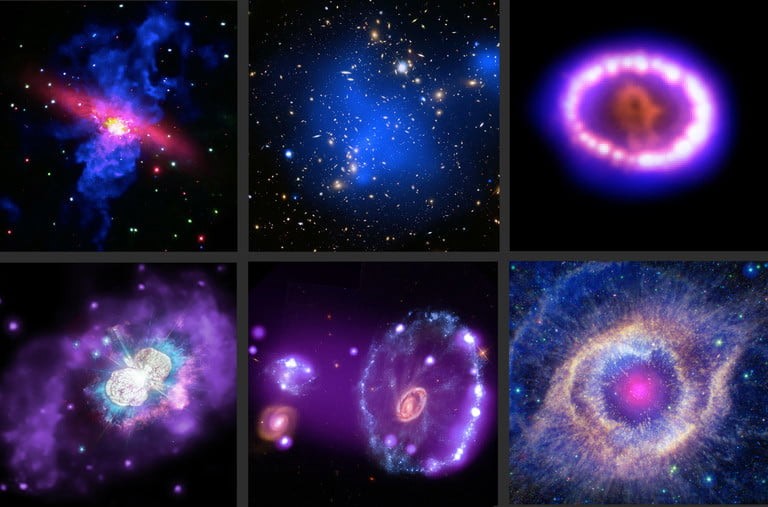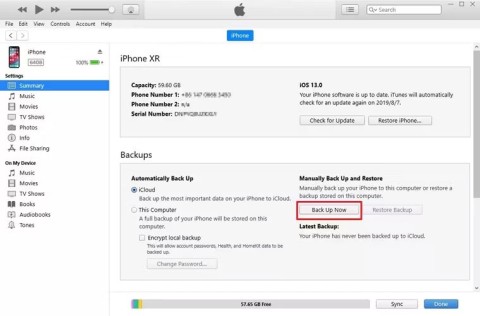Comment récupérer laccès au disque dur, corriger lerreur dimpossibilité douvrir le disque dur

Dans cet article, nous vous expliquerons comment récupérer l'accès à votre disque dur en cas de panne. Suivez-nous !
The universe is a mysterious world to humans. And it is also irresistibly beautiful. Let's admire the beauty of the universe in X-ray wavelength!
NASA's Chandra observatory has been studying the universe in X-rays since it launched in 1999, but it's not as well known as other observatories like Hubble or Spitzer. Part of the reason is because the universe looks very different—sometimes almost unrecognizable—in X-rays. But it can be an invaluable source of information about distant galaxies and strange space phenomena, especially when X-ray data is combined with other wavelength data into a visible image.
That's why NASA has released this stunning collection of images that combine X-ray observations with other wavelength observations, to show how instruments like Chandra can allow us to see the universe through many different lenses.

The object you see in the top left image is the galaxy M82, with Chandra X-ray data showing the gas jets in blue and pink, while Hubble visible light data shows the galaxy in red and orange. These jets glow in radiating streams at temperatures above ten million degrees Celsius, heated by the energy emitted by multiple supernova explosions.
The middle scene in the top row is a galaxy cluster called Abell 2744. It is a giant collection of galaxies bound together by gravity, and also contains a giant cloud of hot gas that can reach tens of millions of degrees Celsius. The heat of this gas causes it to glow brightly in the X-ray spectrum, in the blue range observed by Chandra.
At top right is one of the brightest supernovae observed in the 1980s, called SN 1987a. Chandra data shows the explosion's shock wave in blue, with Hubble data filling in the rest of the image in other colors.
At bottom right is an image showing a system of material that exists on the edge of a supernova called Eta Carinae, with two stars orbiting closely. This image includes not only Chandra X-ray data but also ultraviolet data collected by Hubble, shown in cyan.
The image in the middle of the bottom row is the famous Cartwheel Galaxy, which takes on a distinctive shape when a small galaxy violently collides with a larger one. Chandra data shows the hot gas emitted from the collision in purple, and Hubble data shows red, green and blue, showing how the collision triggered star formation.
Finally, the bottom left image is the stunning Helix Nebula, which offers a glimpse of what our sun might look like billions of years from now as it runs out of fuel and forms a giant cloud of gas and dust. Here, infrared data from the Spitzer telescope is shown in green and red, optical light data from Hubble is shown in orange and blue, ultraviolet light from the Galaxy Evolution Explorer is shown in cyan, and Chandra data is shown in white, highlighting the image of a dwarf star at the center of the nebula.
Dans cet article, nous vous expliquerons comment récupérer l'accès à votre disque dur en cas de panne. Suivez-nous !
À première vue, les AirPods ressemblent à n'importe quel autre écouteur sans fil. Mais tout a changé avec la découverte de quelques fonctionnalités peu connues.
Apple a présenté iOS 26 – une mise à jour majeure avec un tout nouveau design en verre dépoli, des expériences plus intelligentes et des améliorations des applications familières.
Craving for snacks but afraid of gaining weight? Dont worry, lets explore together many types of weight loss snacks that are high in fiber, low in calories without making you try to starve yourself.
Rest and recovery are not the same thing. Do you really need rest days when you schedule a workout? Lets find out!
Les étudiants ont besoin d'un ordinateur portable spécifique pour leurs études. Il doit être non seulement suffisamment puissant pour être performant dans la filière choisie, mais aussi suffisamment compact et léger pour être transporté toute la journée.
L'ajout d'une imprimante à Windows 10 est simple, bien que le processus pour les appareils filaires soit différent de celui pour les appareils sans fil.
Comme vous le savez, la RAM est un composant matériel essentiel d'un ordinateur. Elle sert de mémoire pour le traitement des données et détermine la vitesse d'un ordinateur portable ou de bureau. Dans l'article ci-dessous, WebTech360 vous présente quelques méthodes pour détecter les erreurs de RAM à l'aide d'un logiciel sous Windows.
Refrigerators are familiar appliances in families. Refrigerators usually have 2 compartments, the cool compartment is spacious and has a light that automatically turns on every time the user opens it, while the freezer compartment is narrow and has no light.
Wi-Fi networks are affected by many factors beyond routers, bandwidth, and interference, but there are some smart ways to boost your network.
Si vous souhaitez revenir à la version stable d'iOS 16 sur votre téléphone, voici le guide de base pour désinstaller iOS 17 et rétrograder d'iOS 17 à 16.
Le yaourt est un aliment merveilleux. Est-il bon de manger du yaourt tous les jours ? Si vous mangez du yaourt tous les jours, comment votre corps va-t-il changer ? Découvrons-le ensemble !
Cet article présente les types de riz les plus nutritifs et comment maximiser les bienfaits pour la santé du riz que vous choisissez.
Établir un horaire de sommeil et une routine de coucher, changer votre réveil et ajuster votre alimentation sont quelques-unes des mesures qui peuvent vous aider à mieux dormir et à vous réveiller à l’heure le matin.
Get Bathroom Tower Defense Roblox game codes and redeem them for exciting rewards. They will help you upgrade or unlock towers with higher damage.













